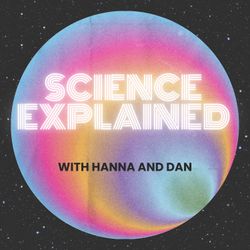Science explained
All Episodes

4. How do you know if a scientific paper is good quality?
17:24||Season 1, Ep. 4Join co-hosts Dan and Hanna as they dive into challenging task of determining the quality of scientific papers. Throughout the discussion, they touch on common misconceptions surrounding the peer review process, the importance of reputable journals, and the significance of citation metrics like impact factors. They share real-life examples, including infamous cases of scientific fraud, and emphasize the risks of relying solely on journal reputation without examining the quality of the work itself.The episode also highlights the evolving landscape of science communication, particularly in the age of social media, discussing the role of scientists on platforms like TikTok and Instagram. Dan and Hanna address the challenges researchers face in effectively communicating their findings to the public and ponder the importance of verifying sources in an age of information overload.
3. Combatting bias
06:54||Season 1, Ep. 3Join Dan and Hanna, as they discuss the importance of developing critical thinking skills and understanding bias in the context of students at schools and in science. Hanna shares her strategies for encouraging kids to be curious and critical thinkers, like checking sources and understanding bias. Dan discusses how bias can influence scientific research.
2. How do scientific journals work?
19:30||Season 1, Ep. 2In this episode, Hanna and Dan discuss the world of academic publishing and the accessibility of scientific knowledge. They begin by talking about how traditional barriers, like paywalls, have historically kept scientific journals out of reach for most people, and how electronic journals are starting to change that landscape.As they continue, Hanna and Dan explain the complexities of the peer review process, revealing why it can take a long time for research to be published and the challenges faced with journal submissions. They also touch on how preprints and open access are helping to make research more widely available, while considering the role of peer review in ensuring the quality of scientific work (but not all the time!) and acknowledging how abstracts can sometimes mislead.They also offer practical tips on finding academic resources using platforms like Google Scholar and PubMed. Dan also shares a story about an unexpected collaboration that emerged from the preprint process.
1. Citizen science and peer review
12:38||Ep. 1In this episode we introduce who we are and discuss Hanna's experiences as a science teacher. We cover how the lay public can get involved in scientific data collection (also known as citizen science) and how the Frontiers for Young Minds journal gets school students involved in scientific peer review.
loading...